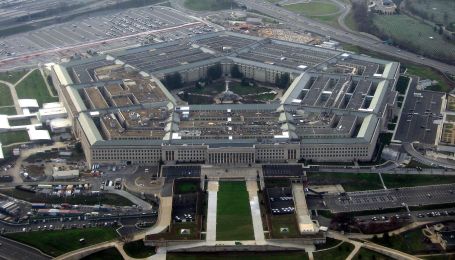Archive for November 6, 2014
UNMANNED SYSTEMS: Pentagon’s New Mantra
Commonality, Interoperability, Affordability.
TYSONS CORNER, Virginia — For years, advocates of unmanned systems — robots, drones and autonomous vehicles — have repeated the mantra “dirty, dull and dangerous.”
In other words, unmanned systems can free humans from tasks that are inherently “dirty, dull or dangerous,” and in most cases do it faster, longer, safer and cheaper than people. Now, the mantra is “commonality, interoperability and affordability” — at least around the Pentagon — where the Army, Navy, Air Force and Marine Corps are all facing new demands and adversaries but with less money.
That’s been the take-away this week from the Unmanned Systems Program Review 2014, sponsored by the Association of Unmanned Vehicle Systems International, the leading trade group for all things robotic — civilian and military. Until recently, the three-day annual event, which ended today (November 6) has been a platform for the armed services and other government agencies like NOAA and DARPA, to explain what they are looking for in the way of unmanned ground, air on maritime vehicles. They also outline how their existing programs — like Navy counter mine warfare robots (see photo below) or reconnaissance drones for the Army — are doing and what changes in design or mission are likely in the future.
But as one speaker after another addressed the audience of manufacturers, academics and reporters outside Washington, they noted that defense budgets are tight and likely to get even tighter if Congress resumes across-the-board spending cuts known as sequestration in Fiscal Year 2016. “We don’t really know how much [money] we’re going to end up with,” said Tom Dee, deputy assistant secretary of the Navy for Expeditionary Program and Logistics Management. Uncertainty in funding really puts the squeeze on, driving Defense Department program managers to focus on what they can afford. And that includes programs where the aircraft fly and the submarines and boats sail without a human on board. Major General Robert Dyess, director of Force Development in the financial management (G-8) section of the Army Staff, called sequestration a “large black cloud.”
The budget restraints come at a time when America and its military are facing a widening array of threats and challenges from violent extremist groups like Al Qaeda and ISIL in the Middle East and al Shabaab in Africa, criminal narcotics cartels based in Latin America but spreading to Africa and Europe, disease outbreaks like Ebola and natural disasters like Haiti’s earthquake or Japan’s tsunami. Military peers like Russia and China and near peers like Iran and North Korea pose additional concerns. Pentagon leaders have been saying for months that the U.S. military will have to do more with less and unmanned systems could be a way to drive down costs..
So the military in general, and unmanned systems program managers in particular, are looking for commonality in controls and other equipment. Dyess said the Army wants common controllers for unmanned ground vehicles and small unmanned aircraft systems like the Raven, Wasp and Puma, so they can work in unison.
The Defense Department’s Joint Staff Robotic and Autonomous Systems Team is trying to identify advanced applications for increased interoperability between manned and unmanned systems, according to Army Colonel Charles Bowery, the team’s officer in charge. “Interoperability is probably the most important thing we are doing now,” said Chris O’Donnell, Tactical Warfare Systems staff specialist for the Joint Ground Robotics Enterprise in the Office of the Secretary of Defense.
Most speakers advised the conference that the Defense Department had little use for proprietary technology that makes it impossible to swap out failing parts or add new modular equipment like cameras or sensors to robotic equipment. “Open architecture is critical,” Captain Eric Wirstrom, Maritime Operation Director at Navy Expeditionary Combat Command, said today. On the issue of affordability, he was emphatic in his advice to industry about selling unmanned underwater vehicles and the sensors they can carry: “I need it cheap.”

U.S. Navy sailors deploy a MK 18 MOD 2 Swordfish unmanned undersea vehicle (UUV) to survey the ocean floor during the International Mine Countermeasure Exercise . (U.S. Navy photo by Mass Communication Specialist 1st Class Blake Midnight/Released)
Your 4GWAR editor learned a lot about the future path or unmanned systems in the military over the three-day AUVSI event and we’ll be summing it up on Saturday. Please check back with us this weekend.
